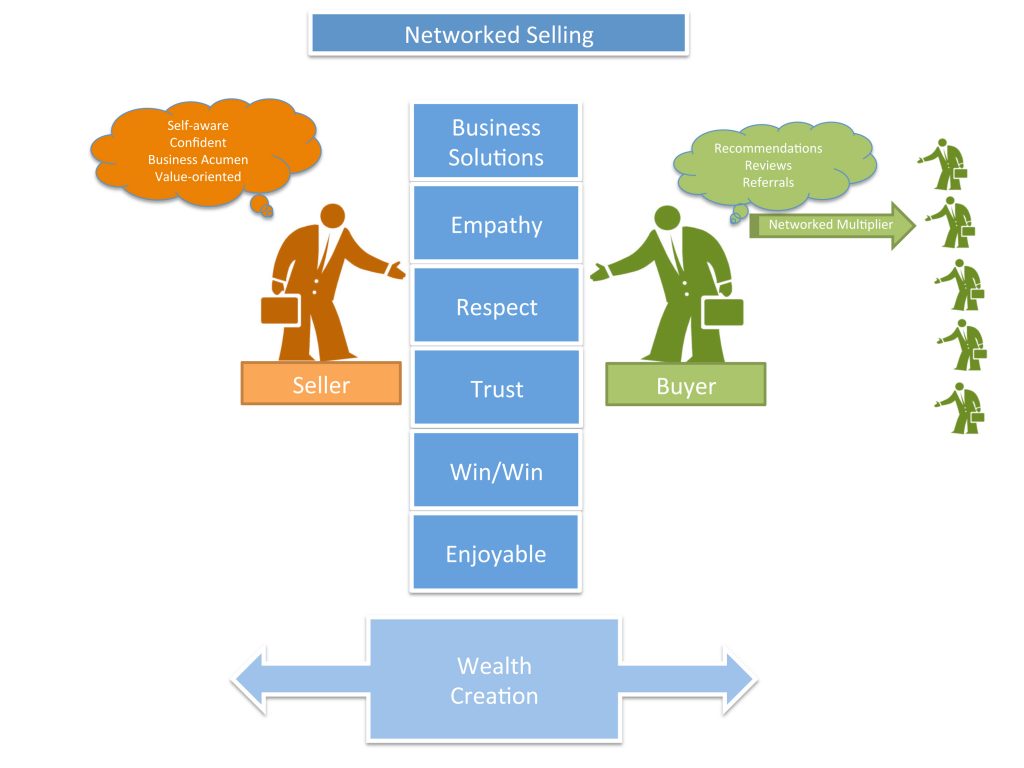In our last article in this series we posed the question of a salesperson finding their own meaning or having it forced on them. In this, my final post in this series, let’s look at the most vital factor in finding meaning.
Altruism
Meaning in life for a salesperson is tied directly to altruism: the performance of good for others for no other reason than the good performed. When salespeople really benefit others, they not only make repeat customers but they help enhance their own reputations.
I truly believe tapping into a salesperson’s altruism is even better than trying to take a moral approach to sales, for altruism is actually a natural, evolutionary approach. This natural instinct is demonstrated in nature, and can even be seen in one of the closest relatives to humans, the bonobo ape; the bonobo will happily give up their own meal in exchange for simple social interaction.
Age of the Buyer
Altruism is needed because we are very clearly in the age of the buyer. Whereas the buyer used to be only informed and educated by the seller, putting the seller in very firm control, today the buyer has all the information they need right online. They are contacting a salesperson when they are well into the buying process. Their alternatives are clearly viewed, along with product or service reviews.
This buyer’s age has led to a lack of allegiance to a particular brand–something else that existed in the old days. It used to be common for a person to be dedicated to, for example, a particular make of automobile. Today a buyer will have a Mercedes one year, perhaps a Maserati a year from now, a Buick down the road, and so on. It’s all down to price and features. This is also true in B2B.
In my opinion the SaaS (Software as a Service) model makes it even easier for a customer to behave in this fashion. With a monthly subscription a buyer can say, “Oh, I only need it for this month” and the following month switch to something else.
All across the boards, in just about every industry, the buyer pattern has changed. For that reason, the seller must also fundamentally change.
Seller Behavior
Because of this radical shift in buyer behavior, the seller is under enormous pressure and requires sales intelligence to track with the buyer and react to the buyer’s satisfaction. We’re now in a networked world and, because of recommendations, a salesperson’s reputation follows them. Recommendations could be said to be the currency in a networked community.
Is behavior change possible? According to many sources, the answer is a resounding yes. Currently at the Sigmund Freud University in Vienna there is a project underway in which psychotherapy is being conducted by robots. It is apparently more effective than human-to-human psychotherapy because the robot is very neutral, and patients have a tendency to open up more because they have nothing to be ashamed of. The primary impetus for this project is to effect a broad change in behavior more rapidly, because that is what is really needed on this planet at this time.
Network Selling
So, too, the seller’s behavior must change, and as rapidly. For ourselves, we have facilitated this change with our Network Selling approach. 
The Network Selling philosophy is designed to create a win-win situation, both for the buyer and the seller. When this has happened, the buyer will happily provide referrals to the seller, and as well, will recommend the seller’s product or service to others.
Let’s take a brief walk through each step of Network Selling.
Business Solutions
As you can see in the graphic, Network Selling starts with a business solution–you’re certainly not going to win either way (as a seller or for the buyer) without one.
Empathy
It is vital that you, as a seller, fully understand your buyer’s need. That’s the only way the next step of Network Selling–empathy–will come about. Empathy is directly correlated to the needs and pain points of the buyer.
Respect and Trust
How does respect come about between a seller and a buyer? It comes about through communication.
Communication can happen through online meetings, webinars, phone calls or on-site meetings. It is through communication that the seller creates a solid image of themselves and their product or service.
A vital part of this communication–and one which salespeople too often leave out–is listening. The seller must hear, understand and rapidly respond to questions.
It is through communication that the buyer will ultimately respect the seller–or not. And through consistent respect comes the next stage of Network Selling: Trust.
Win-Win
As the opportunity moves forward through the sales process, it should be heading for a win-win, in which both the buyer and the seller come out ahead. All the Network Selling steps lead up to this one.
Enjoyable
What do all of the above steps result in? An enjoyable buying experience–which is something any company, sales organization or sales rep is going to have to create to survive in today’s network world.
And as shown in the graphic, the successful establishment of all the Network Selling Steps results in wealth creation on both sides.
Altruistic Instinct
The seller should embrace Network Selling, and each of its steps, with their altruistic instinct, which they will find they natively possess.It is this that leads to the needed radical change in seller behavior. When you start behaving with respect, with empathy, with a joyful experience for the buyer, you then find meaning in what you do. And then you’re at the beginning of what we talked about in the last article–when doctors or lawyers actually practiced their crafts and then found meaning.
In the end, you’ll never find meaning by just sitting there thinking about it. It begins through your own action.
Pipeliner CRM empowers salespeople to find meaning in everything they do. Get your free trial of Pipeliner CRM now.






















Comments